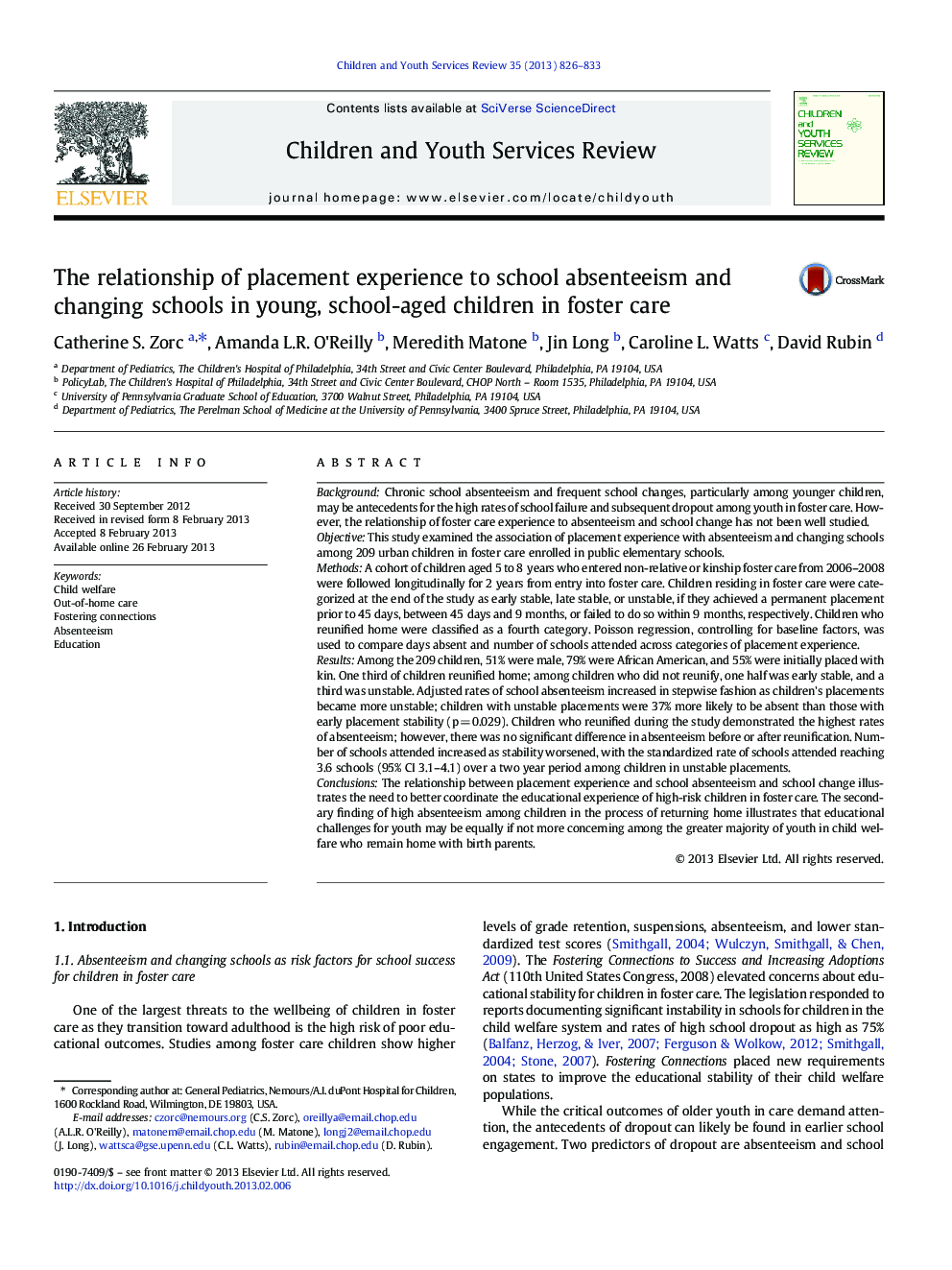| کد مقاله | کد نشریه | سال انتشار | مقاله انگلیسی | نسخه تمام متن |
|---|---|---|---|---|
| 346173 | 617803 | 2013 | 8 صفحه PDF | دانلود رایگان |

BackgroundChronic school absenteeism and frequent school changes, particularly among younger children, may be antecedents for the high rates of school failure and subsequent dropout among youth in foster care. However, the relationship of foster care experience to absenteeism and school change has not been well studied.ObjectiveThis study examined the association of placement experience with absenteeism and changing schools among 209 urban children in foster care enrolled in public elementary schools.MethodsA cohort of children aged 5 to 8 years who entered non-relative or kinship foster care from 2006–2008 were followed longitudinally for 2 years from entry into foster care. Children residing in foster care were categorized at the end of the study as early stable, late stable, or unstable, if they achieved a permanent placement prior to 45 days, between 45 days and 9 months, or failed to do so within 9 months, respectively. Children who reunified home were classified as a fourth category. Poisson regression, controlling for baseline factors, was used to compare days absent and number of schools attended across categories of placement experience.ResultsAmong the 209 children, 51% were male, 79% were African American, and 55% were initially placed with kin. One third of children reunified home; among children who did not reunify, one half was early stable, and a third was unstable. Adjusted rates of school absenteeism increased in stepwise fashion as children's placements became more unstable; children with unstable placements were 37% more likely to be absent than those with early placement stability (p = 0.029). Children who reunified during the study demonstrated the highest rates of absenteeism; however, there was no significant difference in absenteeism before or after reunification. Number of schools attended increased as stability worsened, with the standardized rate of schools attended reaching 3.6 schools (95% CI 3.1–4.1) over a two year period among children in unstable placements.ConclusionsThe relationship between placement experience and school absenteeism and school change illustrates the need to better coordinate the educational experience of high-risk children in foster care. The secondary finding of high absenteeism among children in the process of returning home illustrates that educational challenges for youth may be equally if not more concerning among the greater majority of youth in child welfare who remain home with birth parents.
► Examined relationship of school absences/changes with foster care placement.
► Absenteeism and school changes increased as mobility in foster care increased.
► Children who were reunifying home had the highest absenteeism rates.
► System collaboration is needed to reduce absenteeism and school changes.
► Collaboration should be mindful of children retained in-home and reunified.
Journal: Children and Youth Services Review - Volume 35, Issue 5, May 2013, Pages 826–833